NEC PA242W Monitor Review
by Chris Heinonen on September 27, 2013 9:00 AM ESTInput Lag is tested on the NEC PA242W using the HDMI input and the Leo Bodnar lag tester. This uses a 1080p signal so there will be some scaling involved, but the 3D LUT is far more likely to cause a decrease in performance. The lag on the NEC PA242W measures just over 27ms. This is more than many gamers would want to put up with, but the NEC PA242W isn’t really targeting gamers either. That lag is low enough that professionals that want it and also want to game sometimes should be fine, but hard-core gamers will be looking elsewhere.
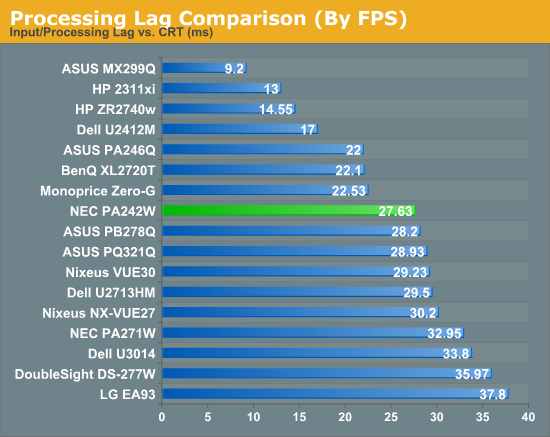
Despite its smaller size and use of LED backlighting, the NEC uses a good bit of power. With its minimum light output of 40 cd/m^2 it consumers 24 watts on an all-white screen. At the maximum normal setting of 240 cd/m^2 it consumers 49 watts. Both numbers are relatively high for the size, and result in low efficiency numbers.
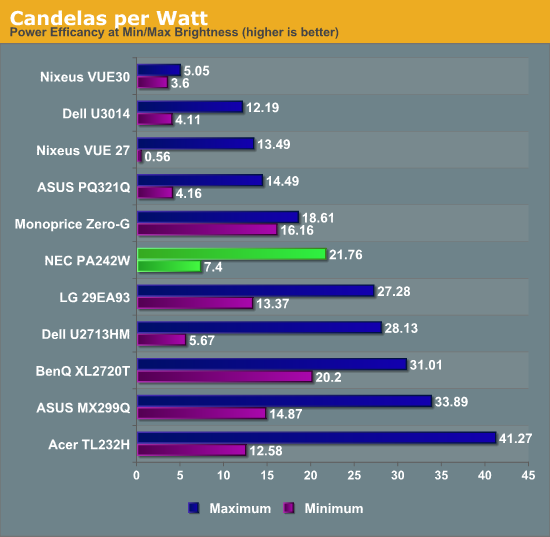
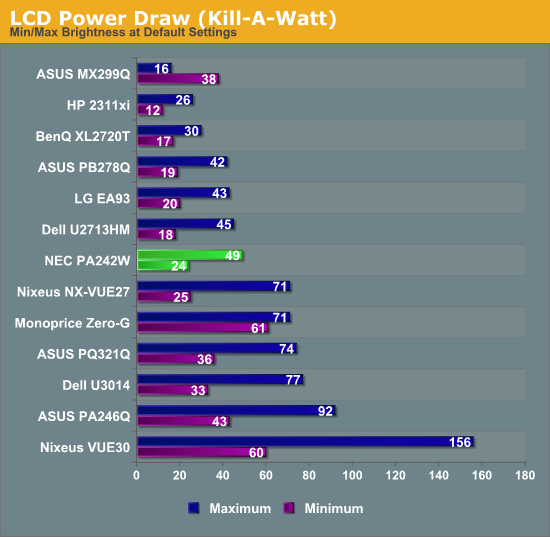
With a G-B LED backlighting system, the NEC PA242W has a gamut larger than the AdobeRGB standard. Because of its internal LUT and correction modes, you are free to choose the appropriate gamut for your work and not have constantly over-saturated colors. For users that need the larger gamut support, NEC delivers it but not at the expense of sRGB and other standard.
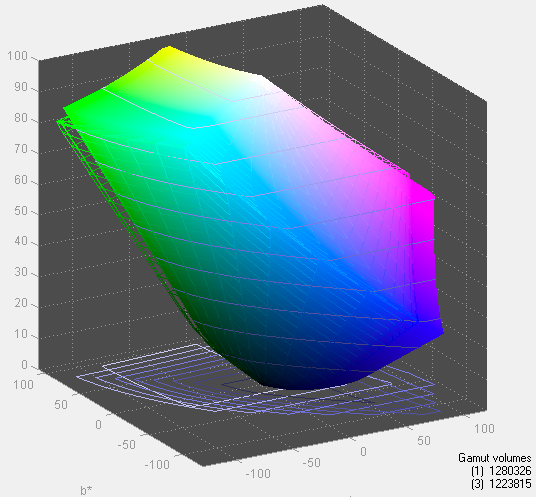
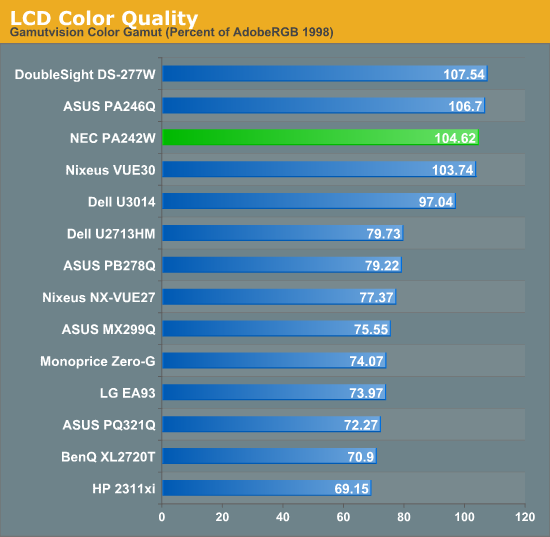










74 Comments
View All Comments
DanNeely - Friday, September 27, 2013 - link
Defect rates on an 8k panel would probably be prohibitive.ZeDestructor - Friday, September 27, 2013 - link
I'm curious on how high they are...If it remains withing tolerable limits, I'd happily take upto 200 dead pixels or something similar...
MrSpadge - Saturday, September 28, 2013 - link
Let's talk again once you have a few dozen permanently white, red green or blue dots right in your primary viewing area!ddriver - Saturday, September 28, 2013 - link
As long as the pixels aren't clustered in a small region dead (dark) pixels will probably not be distinguishable. Stuck bright pixels are a different matter, but at that pixel pitch shouldn't be that much annoying too.ZeDestructor - Saturday, September 28, 2013 - link
As ddriver said,, as long as it isn't in a cluster, its fine. 200-400 dead pixels spread out over a 440+ppi 24" panel at 30-60cm (my view distances for a desktop) will be pretty hard to spot..SodaAnt - Friday, September 27, 2013 - link
I know that I've seen an 8K prototype at 30" before at least, and it was pretty damn beautiful, but as far as I know, the (well known) company that made it hasn't brought it to market yet.speconomist - Friday, September 27, 2013 - link
You mean 32K, as the 20''monitor is 16 times larger than a 5'' inches monitor.garadante - Friday, September 27, 2013 - link
No, it'd be 8k. Yes, it would be 32 megapixels (roughly) but 4k doesn't mean 4 megapixels. It means 4k pixel width. So 8k pixel width is the same as a 1080p panel stacked 4 wide, 4 high.BlakKW - Saturday, September 28, 2013 - link
I would really like to understand your analogy of 4 wide, 4 high...it would help me remember the reason 4k is better and how this scales when you add a "k". Also, I've seen it argued that even 4k exceeds the human eye's ability to differentiate, so at what point does "everyone" agree you can't tell the difference?ZeDestructor - Saturday, September 28, 2013 - link
4 wide, 4 high he means in terms of "stitching" 1920x1080 (2Kx1K resolution, abbreviated to 2K in some circles, 1080p elsewhere) panels, leading to an effective resolution of 7680x4320 (8Kx4K naming).When I was referring to a panel sizes, I was referring to the diagonal measurement, as most things are quoted/marketed/sold using that measure. Thus 20" = 16 5" panels.
"4k is better and how this scales when you add a "k". " It doesn't. K stands for "kilo", the x1000 prefix.